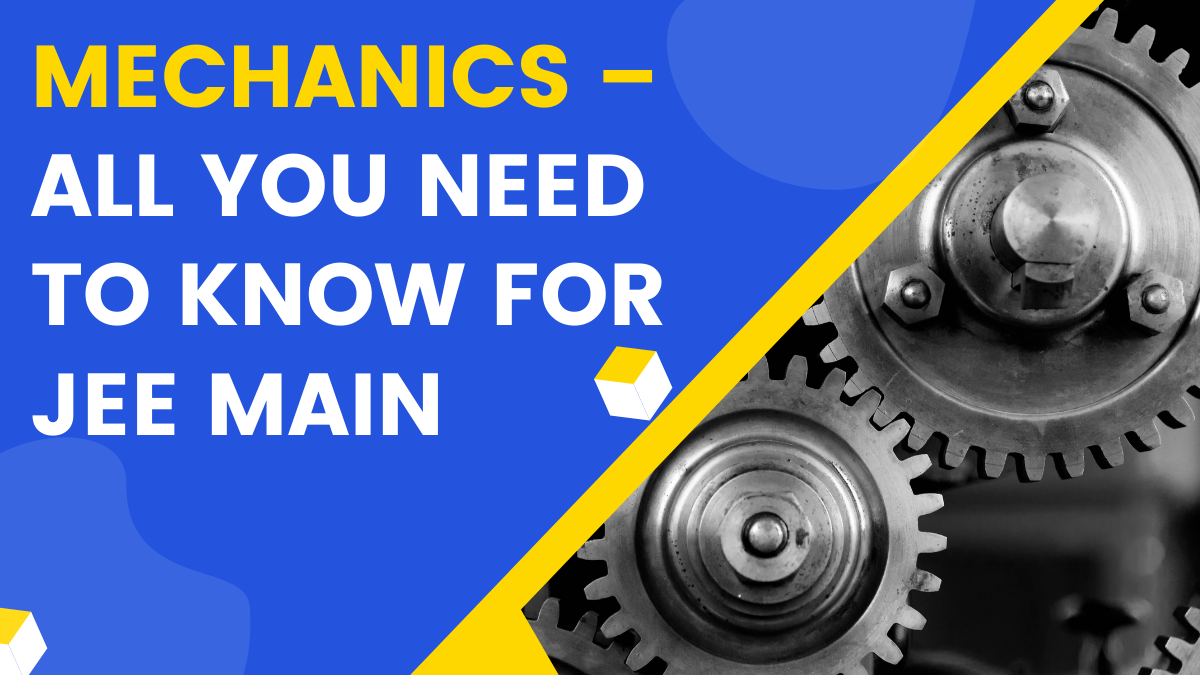Every IIT Aspirant will advise that starting the preparation for the JEE Main should start with the mechanics. It is the building block for preparation for the exam. It is not the foundation for only JEE Main but also Advanced and NEET. For you to get conditioned to the difficulty of the exams appearing and all. Mechanics also have a considerable amount of marks in the exam. Being one of the biggest topics to learn and master, it is regarded widely by many to be one of the most conceptual topics for JEE Main.
From where should you start to study this topic?
It is an easy enough answer that you should start your studies in Mechanics by first starting with:
- NCERT Book: This is the most basic and lays the groundwork for other books to build on it. You can find NCERT books for physics being used by every aspirant for their boards and the foundation for the JEE.
- HC Verma: This is like the bible for all the JEE Main Aspirants. It has the concepts explained in simple and easy to understand English. Even a person who doesn’t know English properly can learn the concepts easily. This book is not cumbersome as other books, which jump directly into the problems without explaining the concepts behind the problems.
- Cengage Mechanics I and II: This is like the holy grail, which contains all the types of problems which can appear for the JEE Advanced. Studying and practicing this will be overkill for JEE Mains. However, this is an insipid book with no explanation of the concepts. It jumps directly into the problems, and the solutions will be given as well, with explanations pertaining only to the problem.
I suggest you study this book only if you are thorough with the first two books mentioned above. NCERT first, HC Verma next, and then for problems and tougher questions to test yourself, go through the Cengage Mechanics books.
What are the subtopics under Mechanics:
- Newton’s Laws of Motion: As the name suggests, this part will deal with laws of motion. How the force will change with other factors? How will friction affect? What is the force required to keep an object from sliding on another object? Such questions and related problems will pertain to this part.
- Kinematics: It deals with the motion of a particle in one and two dimensions. It will have projectile motion and complex problems related to that. Starting with the basic definition of velocity to complex problems for speed will fall under this category
- Work, Energy and Power: Potential-Kinetic energy, energy conservation, work-energy theorem, and power will be dealt with here.
- Momentum and Rotational Motion: It consists of the laws of conservation of linear and angular momentum combined with rotational motion.
- Gravitation: This part deals with law of gravitation and planetary motion coupled with conceptual questions.
- Solid and Liquid properties: Hooke’s laws, Young’s modulus, Bernoulli’s principle, Newton’s law of cooling, Pascal’s law will be explained in this section. These are the basics for all engineering courses
These topics will be used in other places as well, like fluid mechanics. You must try to study these first in a systematic order. Once you have mastered these, you can move onto the next part, like the electromagnetism topic, which deals more with electricity and magnetism.
Not only should you have the books, but you should also have the “Doubtbuddy” app for all your doubt-solving sessions. It is a centralized app for all of your doubts to be solved instantly by the best professional tutors. All you have to do is to click a picture of the problem, upload and your doubt will be solved.
Download the app: https://bit.ly/3vGXhi7



